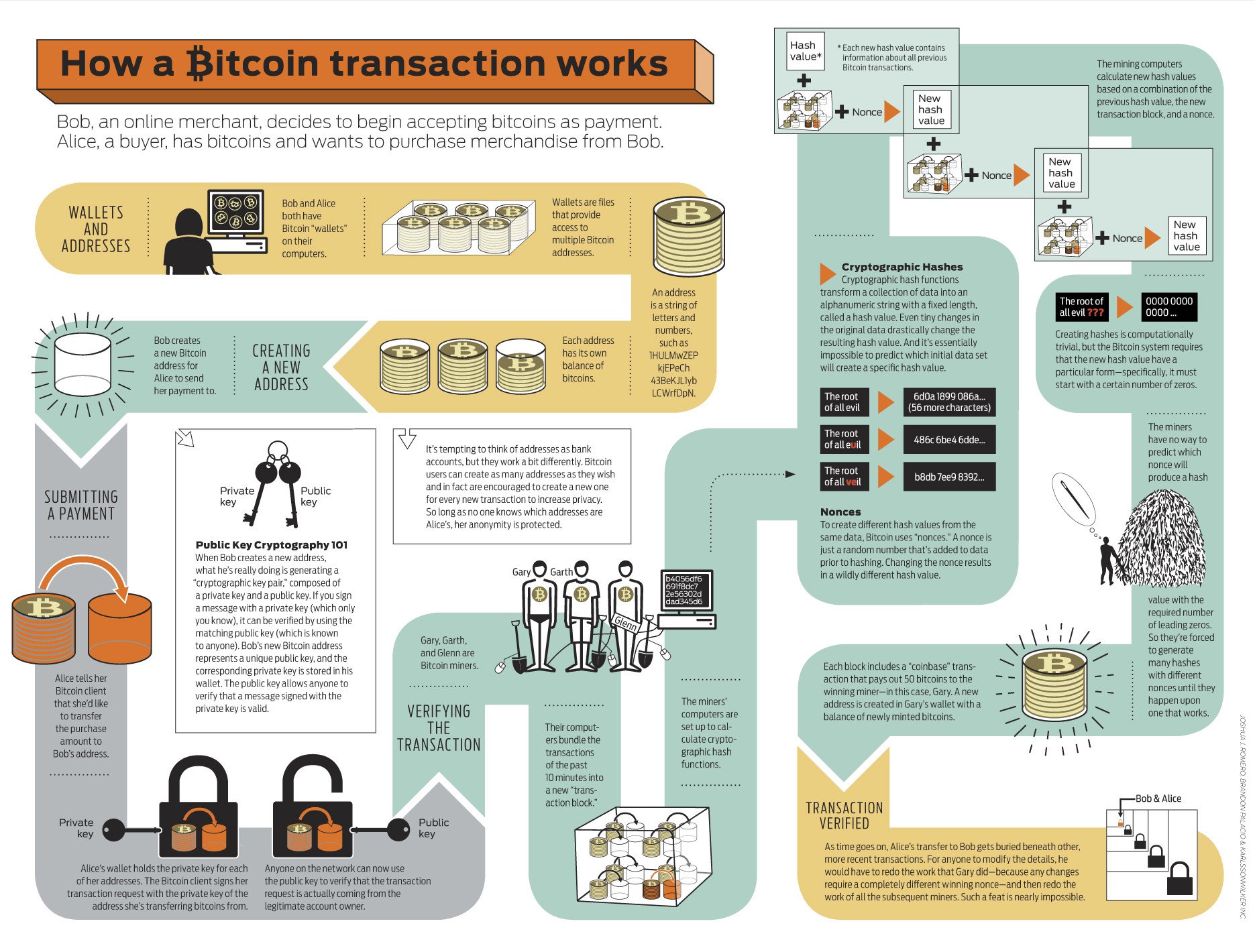
If you find the information here useful, make a donation to the Institute for Applied Sensibility using any of the following:
Bitcoin: 1CL1nSHx13urBwgVKRbxMWQo5HejdTJqZj
Ethereum: 0x3032Ed2453E4E542c543E2c70270b3b879B5A7Be
Litecoin: LMY7QNFBJMtU4NWhdSjwDg7zxbxZgAg8Kj
PayPal: https://www.paypal.me/ronrecord
Thanks!
Bitcoin, created in 2009, was the first decentralized cryptocurrency. Since then, numerous cryptocurrencies have been created. These are frequently called altcoins, as a blend of bitcoin alternative. Bitcoin and its derivatives use decentralized control as opposed to centralized electronic money/centralized banking systems. The decentralized control is related to the use of bitcoin's blockchain transaction database in the role of a distributed ledger.
The Bitcoin network, built to secure the Bitcoin cryptocurrency, has around 5,000 full nodes and is globally distributed. It is primarily used to trade Bitcoin and exchange value, but the community saw the potential of doing a lot more with the network. Because of its size and time-tested security, it is also being used to secure other smaller blockchains and blockchain applications.
The Ethereum network is a second evolution of the blockchain concept. It takes the traditional blockchain structure and adds a programming language that is built inside of it. Like Bitcoin, it has over 5,000 full nodes and is globally distributed. Ethereum is primarily used to trade Ether, make smart contracts, and create decentralized autonomous organizations (DAOs). It is also being used to secure blockchain applications and smaller blockchains. The Institute for Applied Sensibility is initially focusing its research efforts on the Ethereum network and its smart contract feature.
Current Cryptocurrency Market Info
Here is a graphic representation of how a Bitcoin transaction works from an article at cryptocoinsnews.com (click to enlarge)
Click on the experiment you wish to conduct. Thanks for your participation!
Experiment Completed
This experiment was a baseball card collectible DApp, CryptoCards, that provided a platform for buying and selling digital representations of vintage baseball cards.
Experiment Completed
This experiment uses the Simple Miner UI from coinhive.com. This will execute a JavaScript class that mines Monero cryptocurrency using your CPU cycles. Any resulting Monero currency is deposited in the IAS vault to fund future research.
Experiment Completed
This experiment uses the JavaScript Miner from coinhive.com. This will execute a JavaScript class that mines Monero cryptocurrency. This miner is not blocked by adblockers but requires an explicit opt-in from the end-user, informing you that it is using your CPU cycles. This opt-in remains in effect for the remainder of your browser session. Any resulting Monero currency is deposited in the IAS vault to fund future research.
 Ronnie's Home Page or proceed to
Next Section
Ronnie's Home Page or proceed to
Next Section
